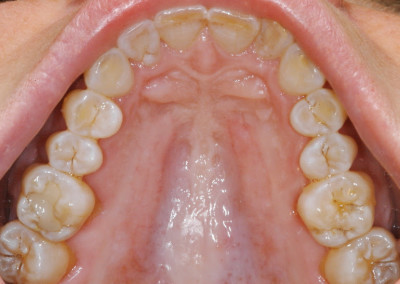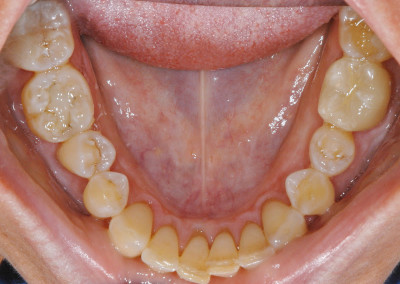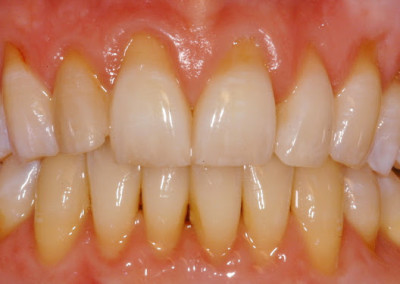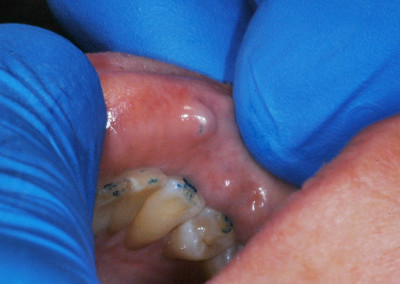The teeth and TM joints in this occlusion are extremely strong, but the upper arch is vaulted and narrow. The maxilla is too small and narrow as compared to the wider mandible. The bones favor a class III skeletal relationship, yet the teeth favor a class I relationship. Stated another way, the posterior teeth are end to end in a pseudo bilateral posterior crossbite. The envelope of function is so tight that the anterior teeth are wedged in force. The patient has recession throughout her mouth and #12 is slightly mobile. The lip posture is extremely tight and lip biting has been a chronic problem.

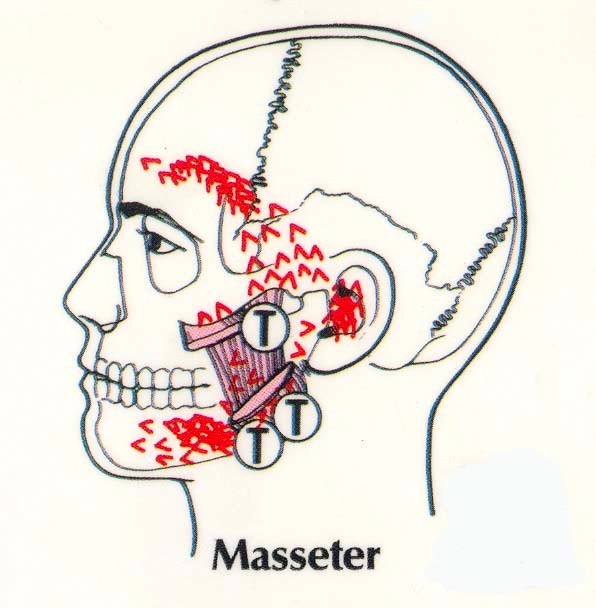
During growth, this patient’s palate grow narrow and vaulted. The mandible grew more normally. This causes the envelope of function to be wedged when the teeth are in MIP. This patient has a chronic clenching issue with constant muscle activity, which continuously puts excessive amounts of lateral pressure on the teeth. Unfortunately her tissues cannot hold under the pressure and a family history of periodontal issues add to the problem. This patient needs to be equilibrated. The equilibration of the anterior wedge is minimal and very effective in turning off the muscle triggers in this case.The anterior temporalis and superficial masseter muscles are position muscles in function and trigger bilateral temporal morning headaches. The anterior teeth control this occlusion in every position and wedge the envelope of function stressing the periodontal foundation. Removing the strong anterior coupling force will quickly give the occlusion a less stressful closure.
FUTURE CONSIDERATIONS…
A flat maxillary balanced splint at night is required and now the patient becomes a periodontal maintenance or grafting procedure case.

